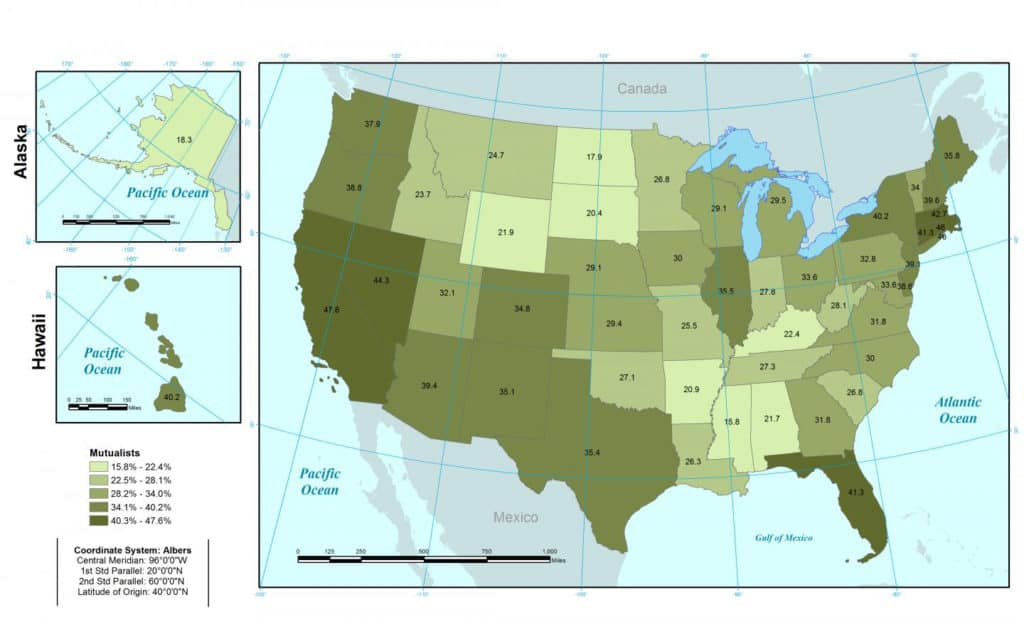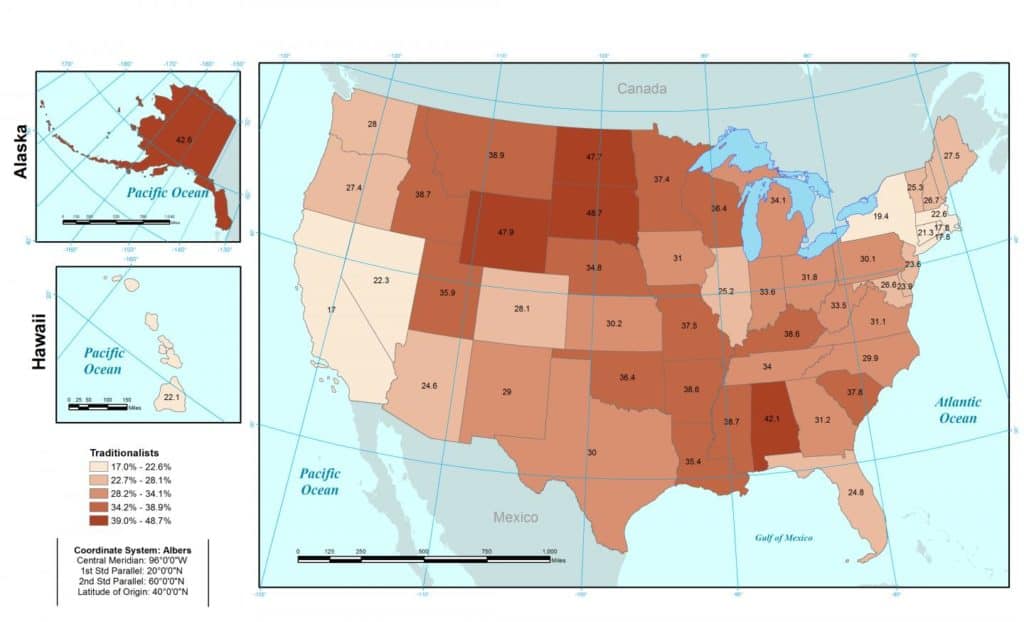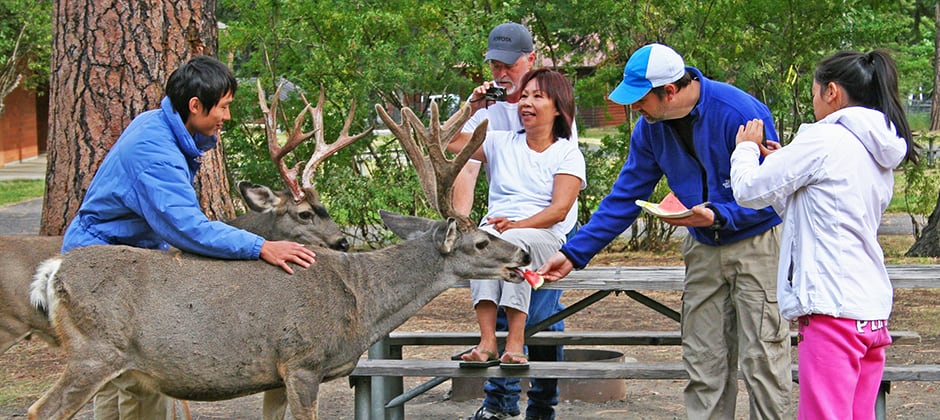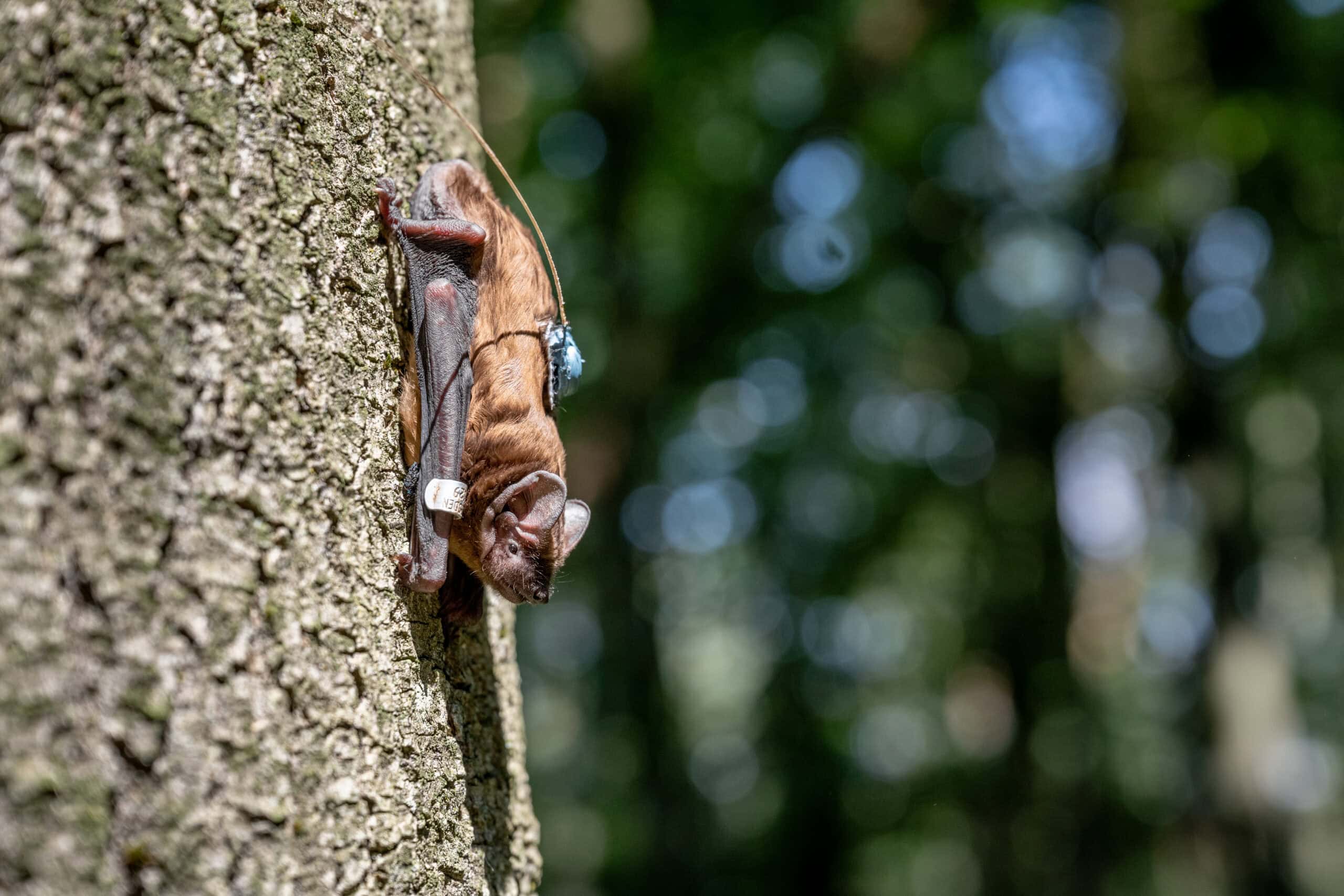Share this article
Study finds traditional attitudes toward wildlife fading
A half-century-long study on wildlife management has found that Americans increasingly value the rights of animals as traditional attitudes toward wildlife wane.
The finding could have major implications for wildlife management, including issues like predator control, endangered species restoration and dealing with human-wildlife conflicts.

From 2004 to 2018, researchers found that Western states had a 4.7 percent increase in mutualists. ©America’s Wildlife Values research team
The study, America’s Wildlife Values, compares “traditionalists,” who believe animals should be used to benefit humans through things like medical research and hunting, with “mutualists,” who put animals on a more equal footing with humans. The study was conducted by researchers from Colorado State University, Ohio State University, the University of Minnesota and Responsive Management.
Overall, the study found traditionalists make up about 28 percent of the United States while mutualists make up about 35 percent of the population. Western states had a 5.7 percent decline in traditionalists and a 4.7% increase in mutualists between 2004 and 2018, according to the research, which involved data taken from recent and historical surveys of the public as well as of wildlife agency leaders and staff.

From 2004 to 2018, California had a decline in traditionalists from 28% to 18%, while North Dakota stayed constant over the same timeframe. ©America’s Wildlife Values research team
“What’s surprising is that the decline in traditionalists in some states is happening at a really rapid pace,” said Michael Manfredo, the head of the Department of Human Dimensions of Natural Resources at Colorado State University and a lead investigator of the study, in a press release.
One of the recent surveys used in the research included a question on whether coyotes (Canis latrans) that have killed a pet should be killed. Nearly 60% of people in Wyoming, Mississippi, Alabama and the Dakotas agreed while only about half that percentage agreed in California, Rhode Island, Connecticut, Massachusetts, Arizona and Nevada.
The decline in traditionalists may reflect increasing urbanization and the different way people in cities learn about wildlife, researchers found. Most mutualist-heavy states have less hunting and angling than traditionalist-heavy states.

“What’s surprising is that the decline in traditionalists in some states is happening at a really rapid pace,” said Michael Manfredo, one of the study’s lead investigators and head of the Department of Human Dimensions of Natural Resources at CSU. ©John Eisele/CSU Photography
The changing attitudes may also reflect overall changes in American diversity, researchers found. Hispanics and Asians had twice as many mutualists as traditionalists, and they were more likely to be mutualists than whites. Meanwhile, wildlife management remains overwhelmingly dominated by white males. Some 91 percent of respondents among wildlife agencies identified as white, and 72 percent identified as male.
“To help wildlife conservation and management efforts remain relevant, it will be important to continue to monitor these changes into the future,” said Alia Dietsch, one of the study’s co-investigators and an assistant professor at The Ohio State University, in the release.
The findings will help agencies interact with traditional partners as well as the rapidly changing U.S. demographic, said Ed Carter, president of the Association of Fish and Wildlife Agencies and executive director of the Tennessee Wildlife Resources Agency.
“There is no single pathway to create broader relevancy for state fish and wildlife agencies,” Carter said in the release. “This study will help agencies identify and challenge internal assumptions about who ‘the public’ is and what ‘the public’ wants or believes.”
Header Image: A recent study found Americans’ attitudes toward wildlife are shifting, raising questions for wildlife managers. ©Rachel+Micah








